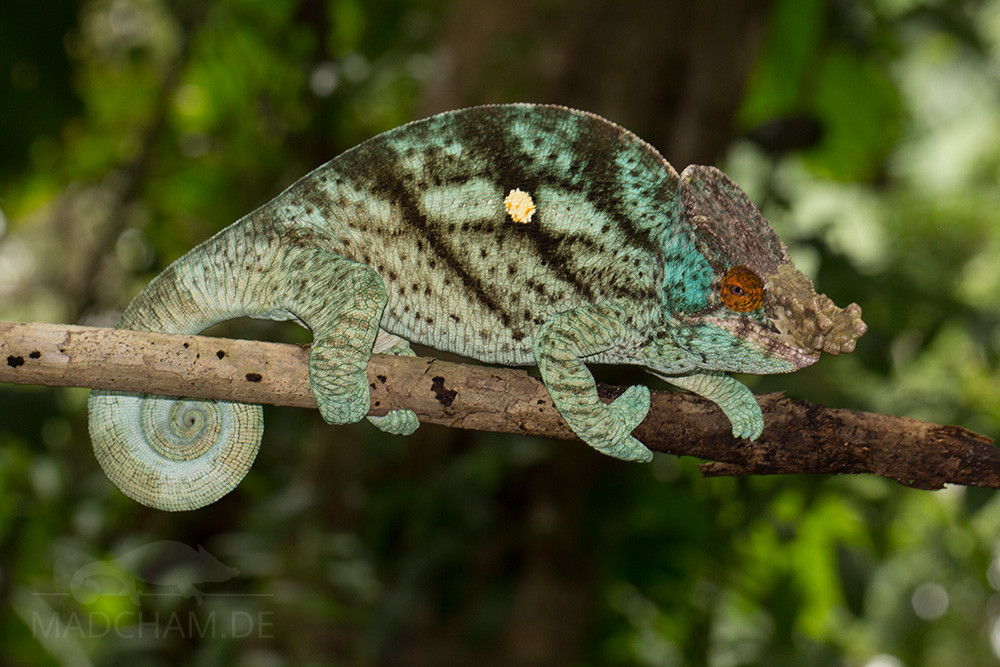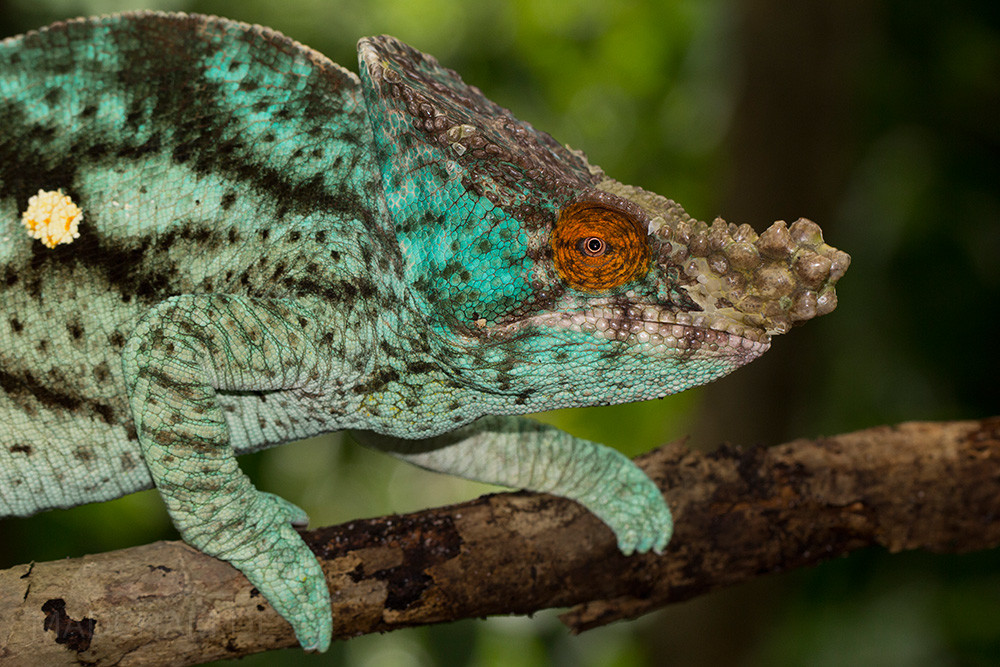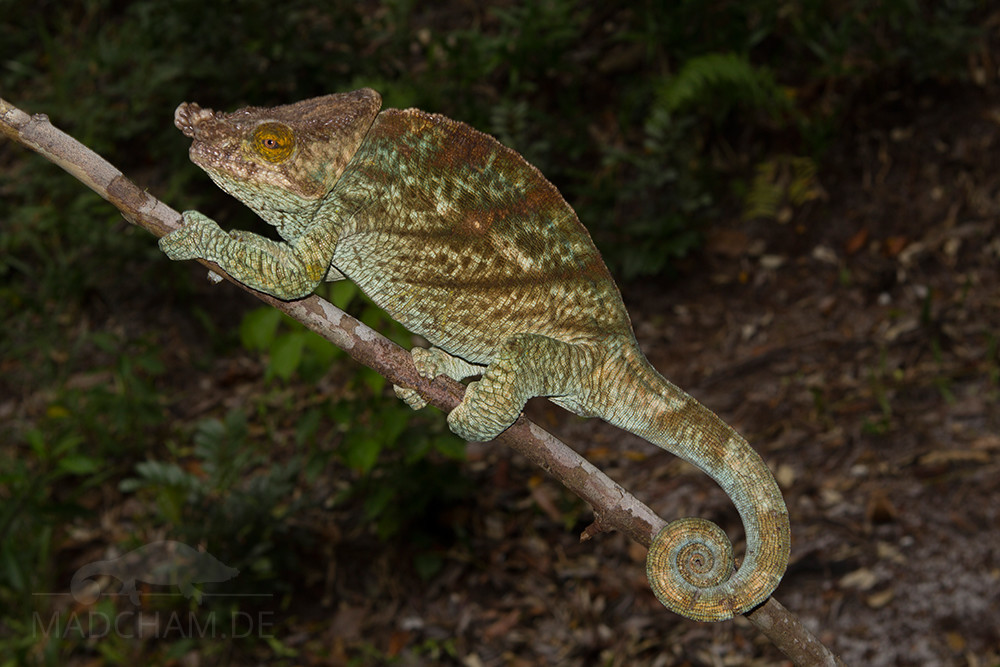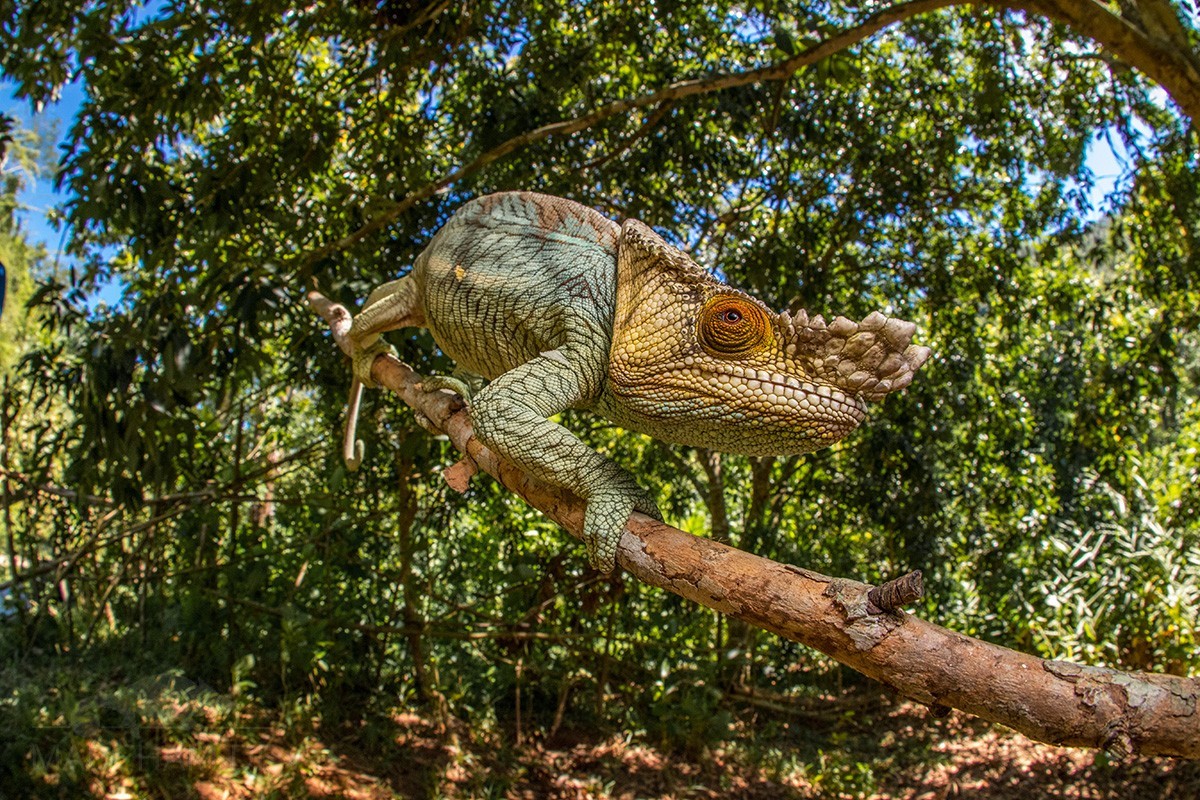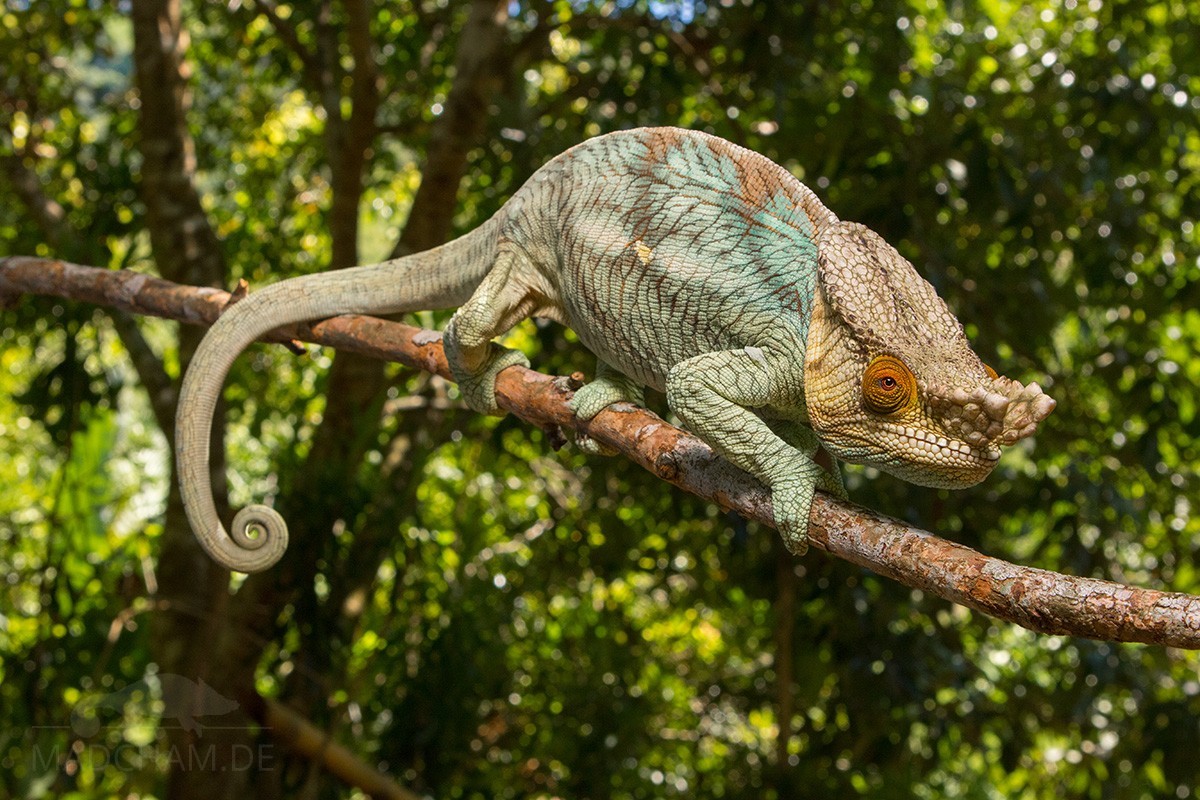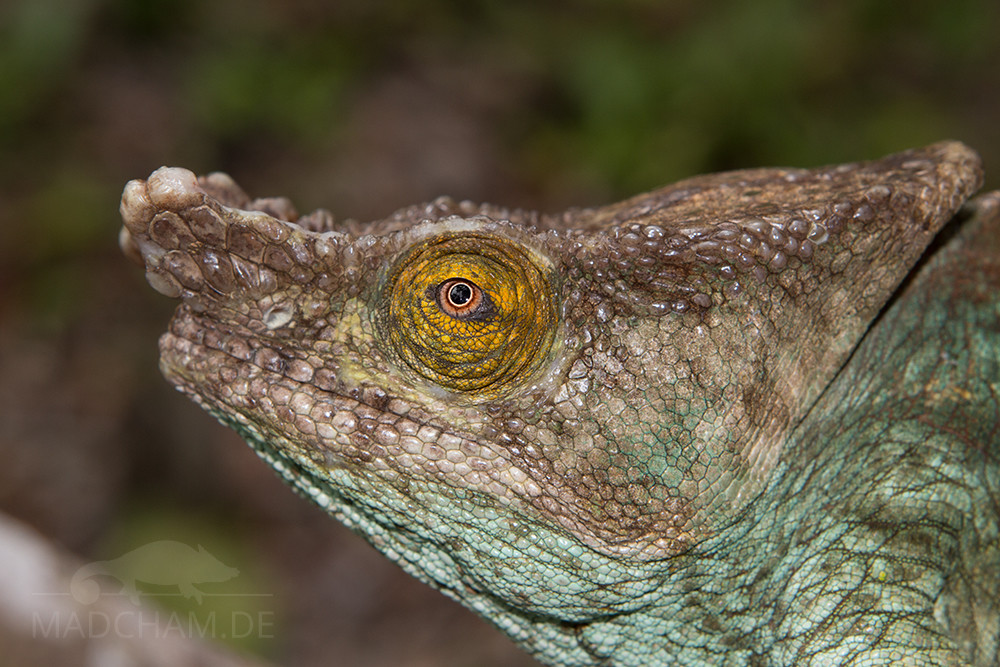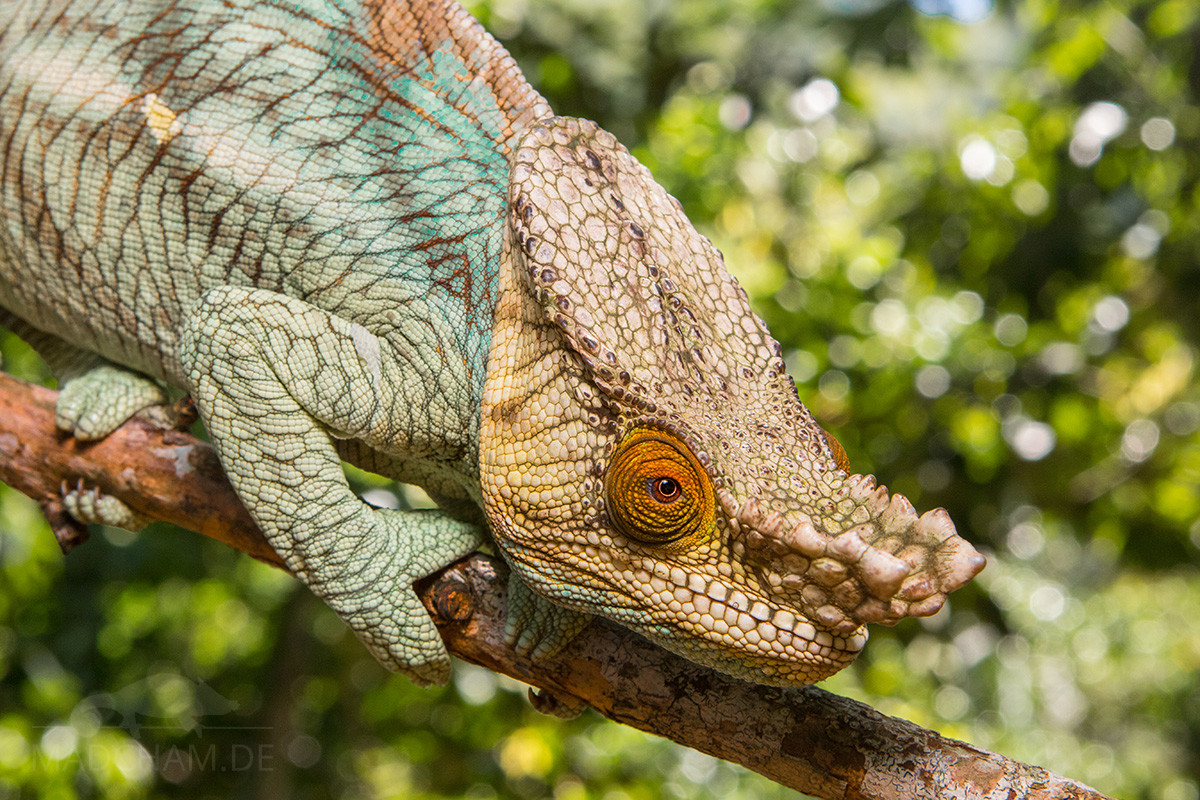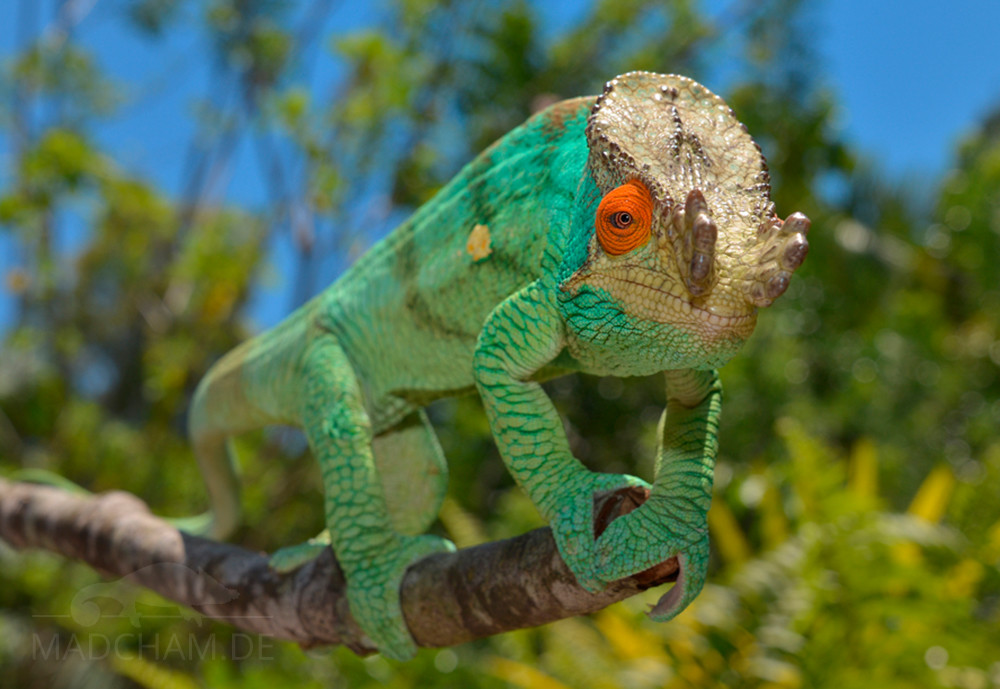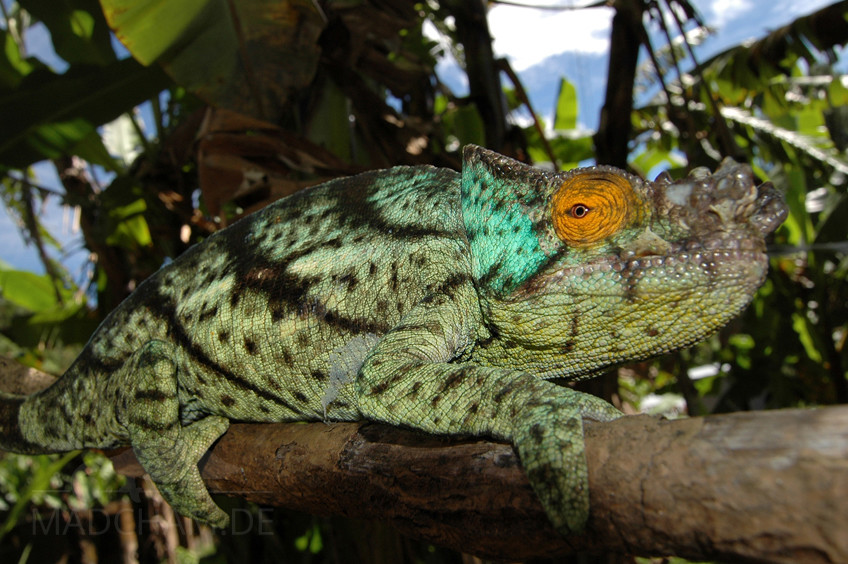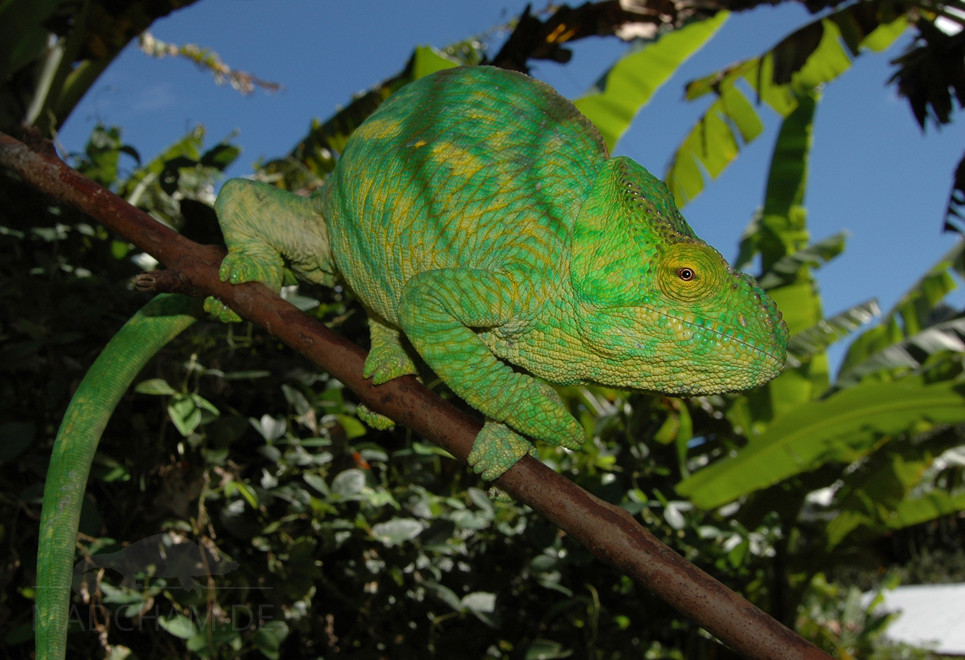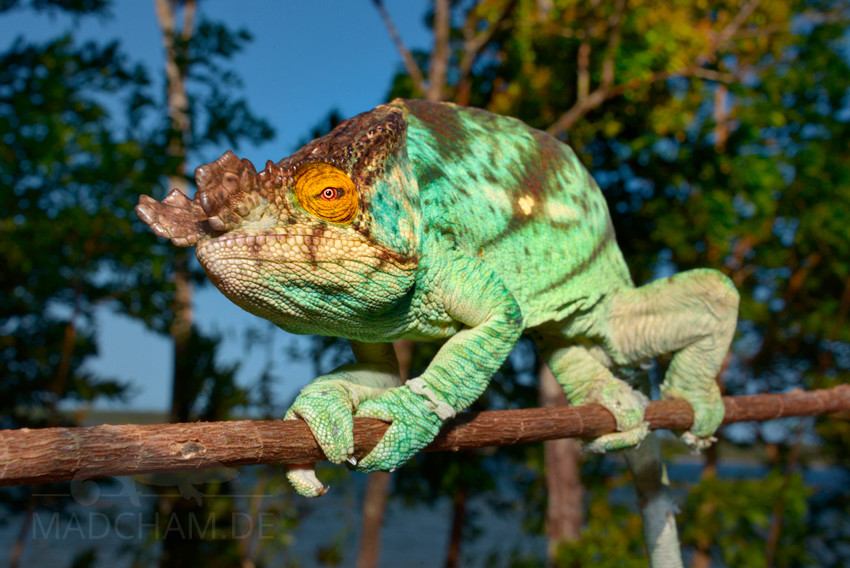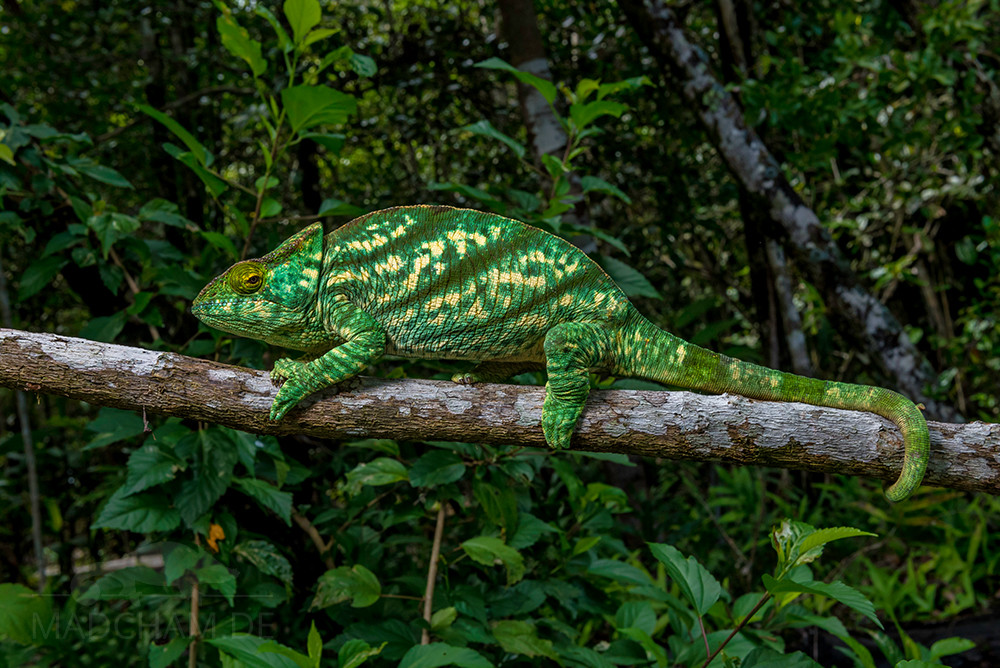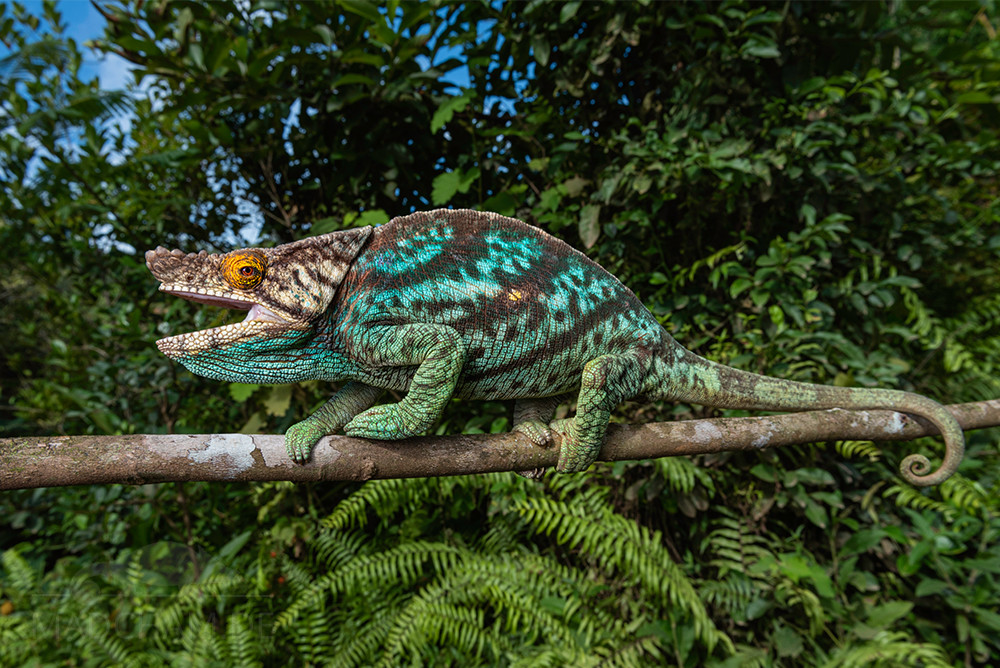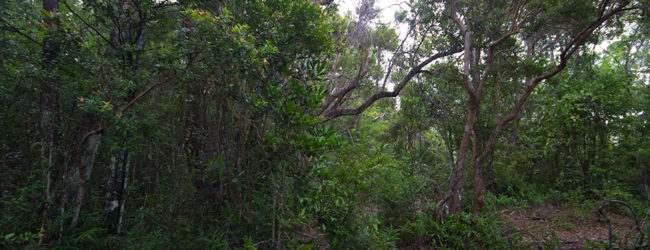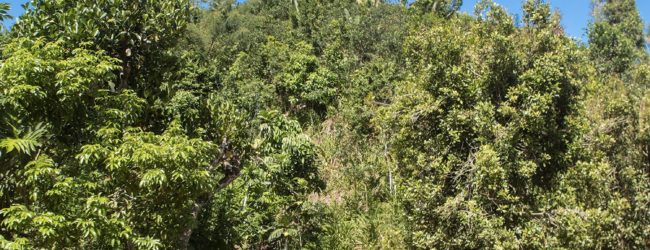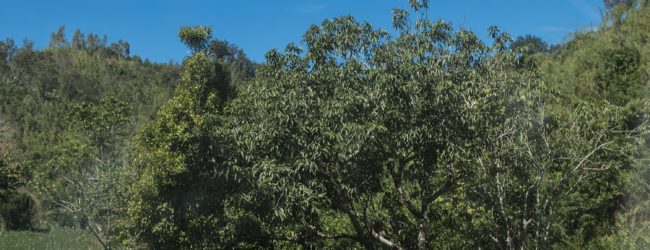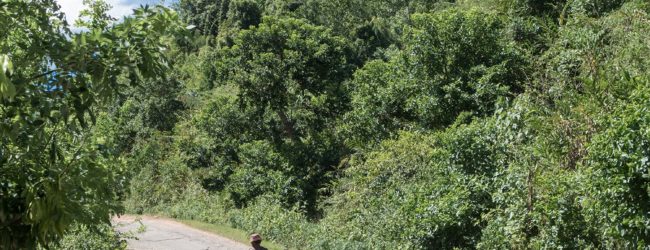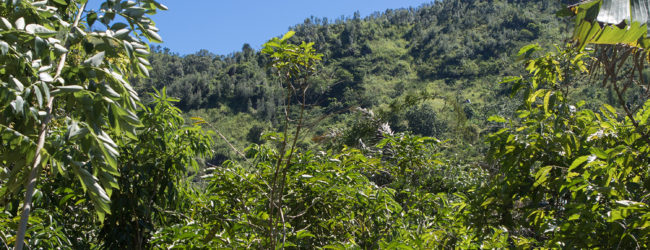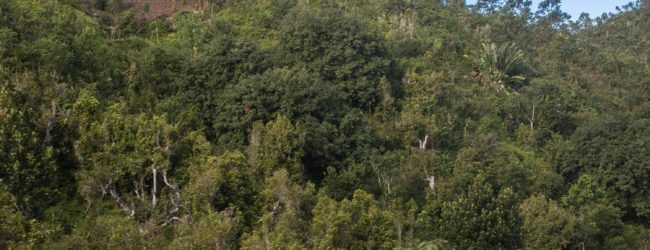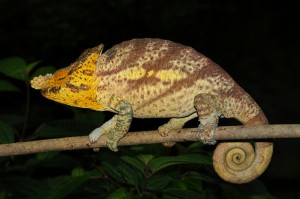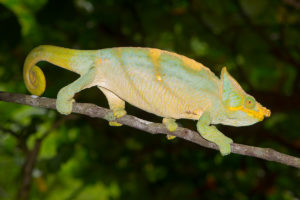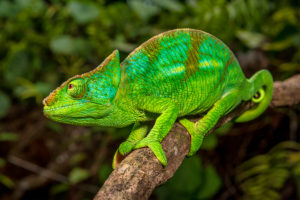Distribution:
Parson’s chameleons of the color variation “orange eye” occur in several areas of Madagascar’s east coast in a region between 50 km south of Toamasina (Tamatave) and Mananara. We want to introduce you to some of these. All of the east coast habitats differ significantly in climate from other Parsons’ habitats. With elevations from 0 to 500 m above sea level, the orange eyes’ distribution area is much lower than the distribution areas of other color variations. Thus it is much warmer as e.g. in Vohimana (yellow giants) or Ranomafana (yellow lips), which are both located in the highlands.
The island St. Marie (in Malagasy Nosy Boraha) is located in the center part of Madagascar’s east coast and belongs to Analanjirofo region. St. Marie is about 50 km long and has a width of two to seven kilometers and approximately 16.000 inhabitants. The capital of the island is Ambodifotatra. Today, a small, modern airport offers daily flights to Antananarivo. Otherwise, you can reach St. Marie easily by boat from Soanierana Ivongo. Especially the white dreamlike beaches of St. Marie are famous, and you can snorkel and dive in many places. That is why the island has been used mainly for tourism for the last decades. Sadly, there is not much intact rainforest left, and it is restricted to a really tiny area in the north of the island. It is often difficult to find Calumma parsonii parsonii here at all nowadays.
Another distribution area, where you can find the same color variation of Calumma parsonii parsonii, is somewhat more southern on Madagascar’s east coast. It is the area around Anjahambe. The habitat here belongs to the less unbeknown distribution areas of this species. Similar to the color variation “yellow giant”, orange eyes here loves to spend time in coffee plantations, but also inside rainforest residues. The denser the forest, the more difficult to find a Parson’s. About 50 km south of Toamasina (Tamatave), Calumma parsonii parsonii is also found in the Akanin’ny Nofy Private Reserve and the Vohibola Reserve. Both reserves are tiny and consist of lowland rainforest.
Appearance & size:
The typical coloration of “orange eye” males is a darkish green or turquoise colored body with bright orange-colored eyelids. Males often have a white-beige spot on the flanks, but not all. Every now and then you can find animals with a light turquoise colored body and almost white head, only the eyelids are colored orange. In terraristics there is a lot of discussions whether there are different varieties of “orange eyes”. In Madagascar we have not yet been able to find this out in any way – both the white-headed and the green-headed “orange eyes” with white lips can be found in the same habitat.
Weight table
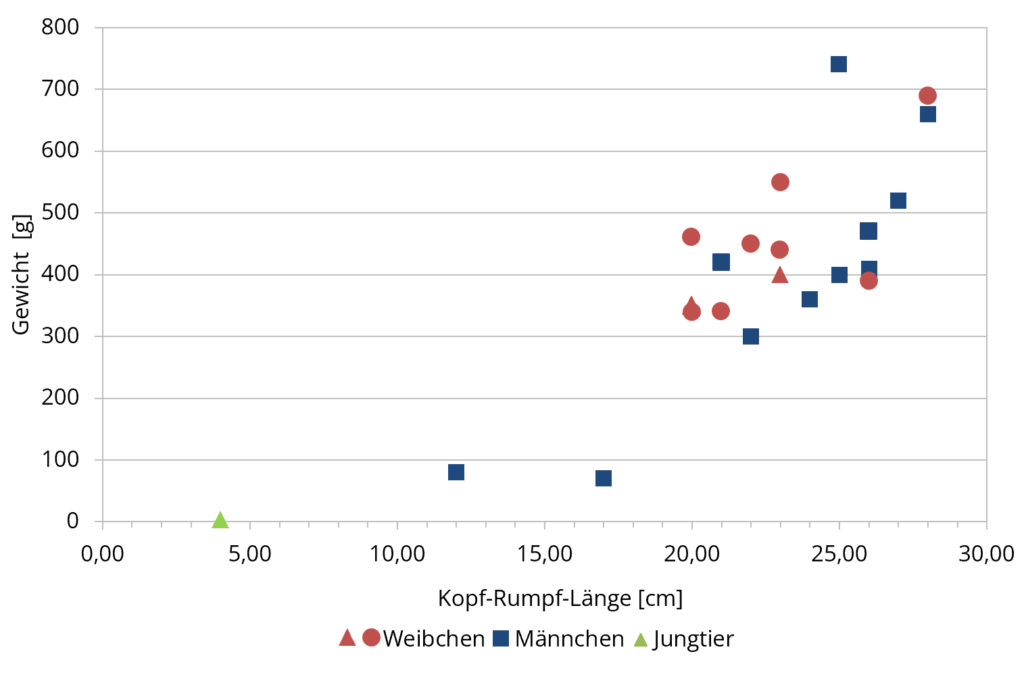
Weibchen = females, Männchen = males, Jungtier = juvenile, KRL = snout-vent-length in cm, Gewicht = body weight in grams
Since 2015, we have been measuring the weights of some chameleons that we found in Madagascar, of course only if practicable with calm animals (and working scales). Up to date, we have only a few weights. Over the long term, we want to get an average weight in proportion to the snout-vent-length (measured from the tip of the nose to the cloaca) from a large number of measurements for each Madagascan chameleon species. It is important to know that weights were all measured at the end of the rainy season when the chameleons have been having the highest food supply of the year. So our table may show the maximum weights of chameleons in Madagascar. Triangular symbols in females mean not pregnant, spherical symbols mean pregnant. Up to date, we have one shared table for all color variations of Calumma parsonii parsonii since it is all the same species.
| Jan | Feb | Mar | Apr | May | Jun | Jul | Aug | Sep | Oct | Nov | Dec | |
| Average temperature | 23 | 24 | 23 | 23 | 21 | 19 | 19 | 19 | 20 | 21 | 22 | 23 |
| Minimum temperature | 20 | 20 | 20 | 19 | 18 | 15 | 15 | 15 | 15 | 16 | 18 | 19 |
| Maximum temperatures | 27 | 27 | 27 | 27 | 27 | 25 | 23 | 23 | 24 | 25 | 26 | 27 |
| Rain days | 18 | 20 | 21 | 13 | 11 | 11 | 15 | 14 | 15 | 16 | 20 | 25 |
We have collected the data given above over several years with thermometers and hygrometers at the finding places of the chameleons. "Average temperature" means that values of a whole month have been calculated to one average value per month. For example all measured minimum temperature values of February have been calculated to one average minimum temperature for February. In plain language, this means single peak values of a day may be a little higher or lower than the average minimum and maximum temperatures. It is possible that a location has an average maximum temperature of 29°C, but one day during that month it had 33°C or even 35°C there.
Nosy Boraha island is located at Madagascar's east coast and has a pleasant warm climate all year long. During rainy season temperatures are a little higher with average temperatures in the 20ies and a slight night drop to 20°C. At daytime it usually has more than 30°C. In dry season, temperatures are a little cooler during day and nighttime.
Precipitation on Nosy Boaha is rather moderate all year long. Rainy season of course has more intense rain, but also "dry" season has regular rainfall. The island is a common destination for foreign tourists and Malagasy vacationers which is mainly due to the mild climate and the beautiful beaches.

We have measured UVB data with a Solarmeter 6.5 in spring (end of March) at the peak of activity of chameleons in Madagascar. We always measured the values that a chameleon could maximally reach in its habitat.
| Jan | Feb | Mar | Apr | May | Jun | Jul | Aug | Sep | Oct | Nov | Dec | |
| Average temperature | 26 | 26 | 26 | 24 | 22 | 20 | 20 | 20 | 21 | 23 | 24 | 26 |
| Minimum temperatures | 22 | 22 | 21 | 20 | 17 | 15 | 14 | 15 | 16 | 18 | 20 | 20 |
| Maximum temperatures | 32 | 31 | 30 | 29 | 27 | 25 | 24 | 25 | 27 | 28 | 29 | 31 |
| Rain days | 18 | 20 | 21 | 13 | 11 | 11 | 15 | 14 | 15 | 16 | 20 | 25 |
We have collected the data given above over several years with thermometers and hygrometers at the finding places of the chameleons. "Average temperature" means that values of a whole month have been calculated to one average value per month. For example all measured minimum temperature values of February have been calculated to one average minimum temperature for February. In plain language, this means single peak values of a day may be a little higher or lower than the average minimum and maximum temperatures. It is possible that a location has an average maximum temperature of 29°C, but one day during that month it had 33°C or even 35°C there. An example of a daily course of temperatures in the rainy season can be found below. It was recorded with data loggers in 2023.
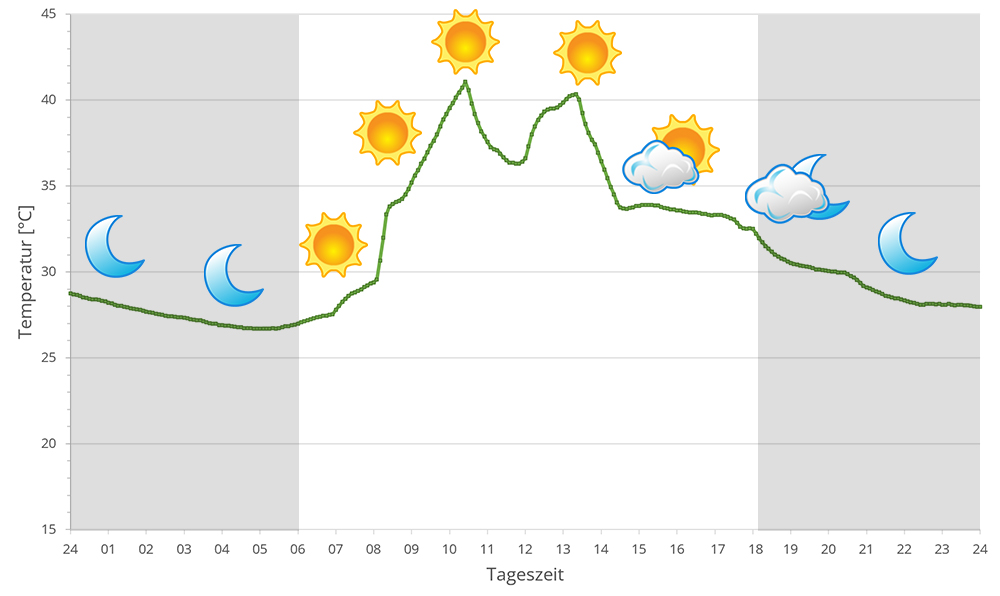
The climate in Anjahambe is warm and humid all year round due to its proximity to the coast and low altitude. At the end of the rainy season, the temperatures in the sun can sometimes exceed 40°C, but then quickly drop below the 30°C mark again. At midday, it is sometimes stuffy in Anjahambe due to the high humidity and extremely hot, which is rather unusual for a Parson's habitat. At night, there is only a moderate drop in temperature during the rainy season.
It rains here regularly all year round, so that the dry season is only noticeable because of the lower temperatures and, above all, a much higher drop in temperature at night. As a result, the average temperature also drops in the dry season, although it still gets warm during the day. In 2023, we used data loggers to measure the relative humidity for a whole day in Anjahambe during the rainy season, the data can be found below.
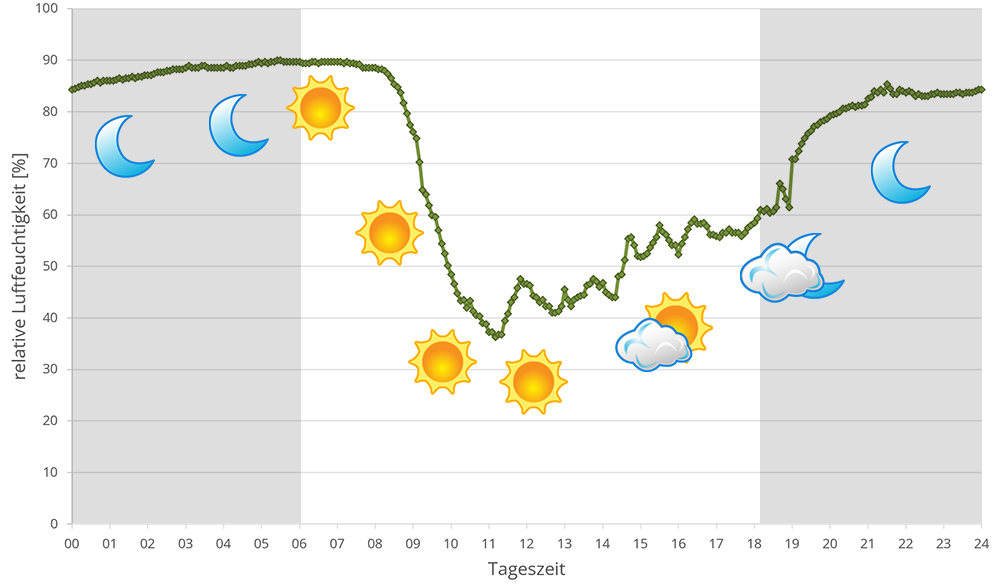
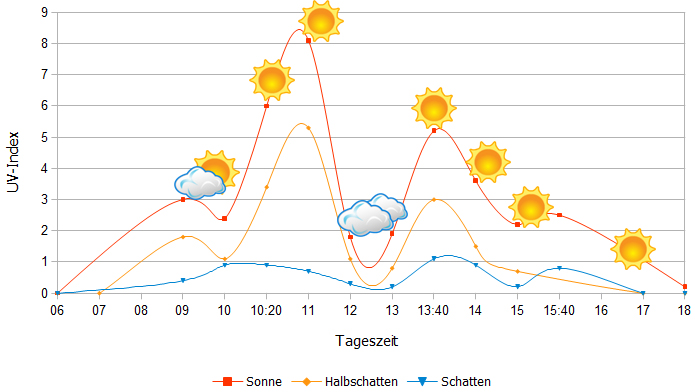 Tageszeit = day time, Sonne = sun, Halbschatten = half shade, Schatten = shade
Tageszeit = day time, Sonne = sun, Halbschatten = half shade, Schatten = shade
We have measured UVB data with a Solarmeter 6.5 in spring (March) at the peak of activity of chameleons in Madagascar. We always measured the values that a chameleon could maximally reach in its habitat.
In 2023, in addition to other climate data, we also measured the air pressure at the locations we visited in Madagascar. The following data is from a whole day during the rainy season in Anjahambe. The X-axis shows the time of day or night. In Madagascar, the day begins at 6 am and night falls at 6 pm. The Y-axis shows the atmospheric pressure in hPa.
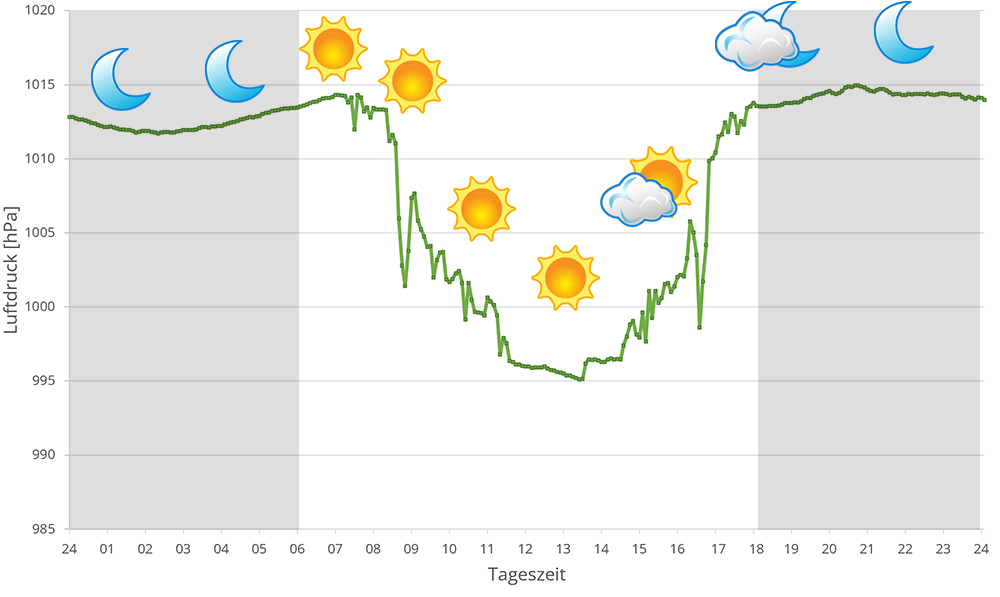
Habitat:
The left habitat on Nosy Boraha or St. Marie is rather small and consists of coffee plantations and pitiable residues of rainforest. The plantations have low, broadly branched coffee branches above a thick foliage layer, and some bigger trees stay in between. In the secondary vegetation around Ambodifotratra and other holiday villages, you will not find this species anymore. The following pictures show the habitat close to Anjahambe and in Akanin’ny Nofy.
Here are some 360° pictures from lake Ampitabe. With the mouse you can rotate in all directions. If you click on the Theta logo, the pictures open in an enlarged view in a separate window. There is also the possibility to execute the images in full screen mode. Have fun watching!
Regenwald im Reservat Akanin’ny Nofy, Region Atsinanana, Ostküste, Madagaskar, März 2018 – Spherical Image – RICOH THETA
Regenwald im Reservat Akanin’ny Nofy, Region Atsinanana, Ostküste, Madagaskar, März 2018 – Spherical Image – RICOH THETA
Regenwald im Reservat Akanin’ny Nofy, Region Atsinanana, Ostküste, Madagaskar, März 2018 – Spherical Image – RICOH THETA
Regenwald im Reservat Akanin’ny Nofy, Region Atsinanana, Ostküste, Madagaskar, März 2018 – Spherical Image – RICOH THETA

